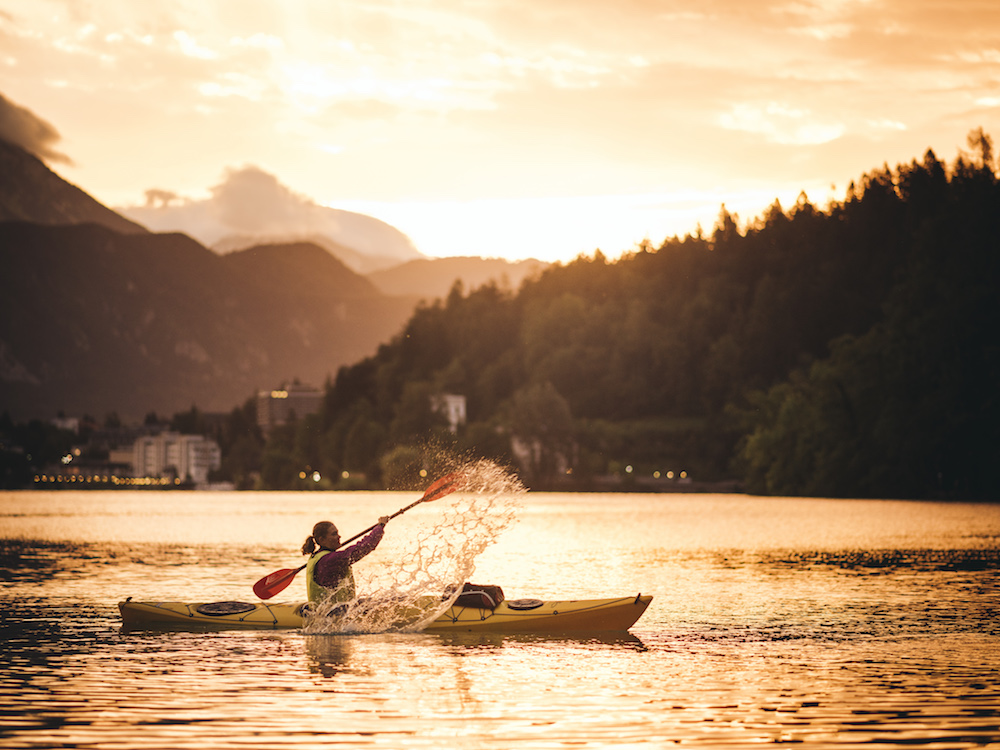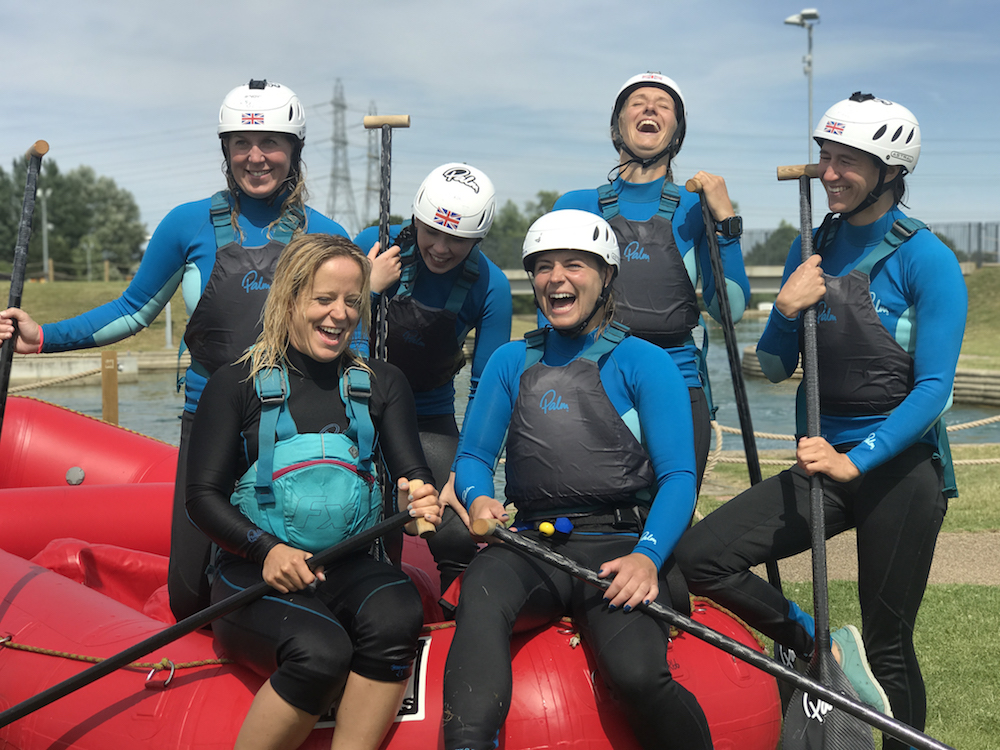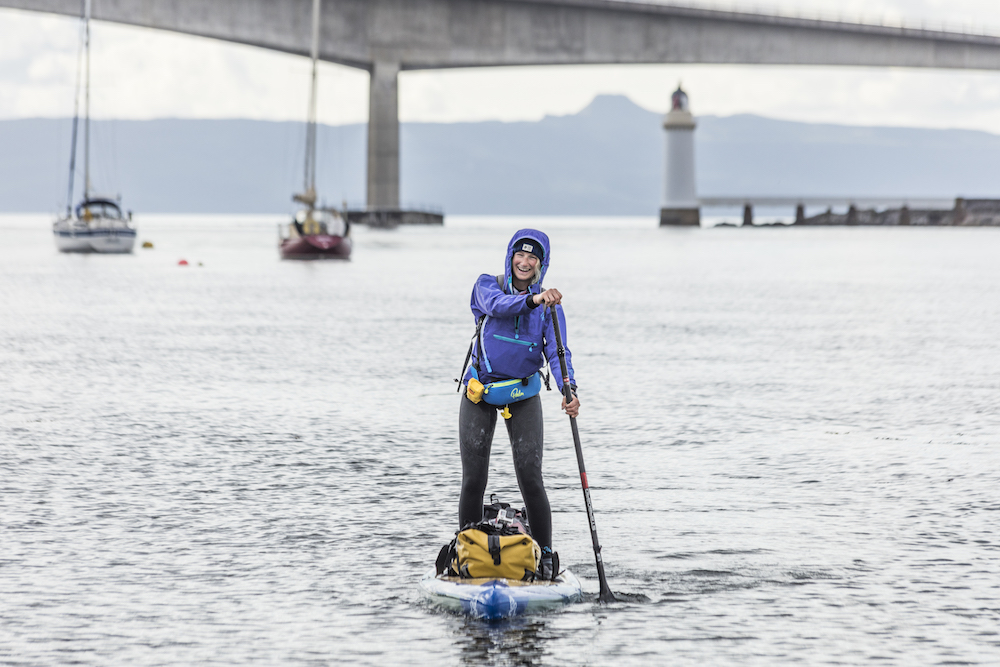We are no longer in the era of the “pink-it” and “shrink-it” mentality. Instead, companies are showcasing designs tailored to women’s bodies and needs, with benefits filtering into every aspect of Paddlesports.
We’ve come a long way since Palm Equipment designed the Canyon S PFD for a 1993 women’s expedition in Nepal. As more companies try to find the perfect fit, everyone benefits.
MAKING THE SLIPPER FIT
The chest is one area where women’s fit needs vary drastically from their male counterparts. “Being a woman doesn’t prevent you from becoming a badass paddler,” Kelly Bastone writes in her article Tested: The Best Personal Flotation Devices for Women on Outsideonline.com. “But,” Kelly expands, “Big boobs combined with bulky PFDs designed for men can get in the way of executing technical paddle strokes.”
“The largest challenge we face when designing for women is fit,”
“When it comes to Women’s PFDs, there are two main points to focus on,” explains NRS Product Manager Mike Barker. “First is the torso length (height) and second is the chest. If you can get both of those points sorted, then you’ve got a solid base to continue your design.”
This is no easy task. Because it isn’t commercially viable to expand your size-range to extremes, companies must get creative in cutting and shaping foam, all while passing the different safety standards. “The largest challenge we face when designing for women is fit,” says Barker. “Fit is critical, and with a wide range of age groups and body types making up a customer base, it can be challenging to make everyone happy.”

For “anything that is a skin fit, having a women’s specific cut can make a huge difference in fit and comfort,” asserts Palm Equipment Marketing Manager Paul Robertson. “When first tackling women’s specific kit as a company, we focused on designing legwear with a proper women’s cut,” says Peak UK Designer Paul Ramsdale. An increasingly popular women’s-specific item is the drysuit, many of which boast a drop-seat relief zipper system; although, “I know a good few guys who would like one as well,” jokes Robertson.
GETTING THE GIRLS
Seeing more women choose higher-end items bodes well for their presence in the sport. “We started offering women’s kit at the more extreme end of the market, but found there was higher demand at the entry/mid-level market,” explains Palm’s Rowie Knight. Balancing development costs is a battle. “We got to this point by doing a top-end WW PFD, but we could be adding products from what we lose from the top area from not reaching MOQ,” says Knight. A wider range of entry level and mid-range equipment helps welcome women into the sport and may encourage more women to take their paddling further, eventually helping hit those MOQs. “We have seen an increasing number of women extending their season into the colder months,” says Kokatat Sales Manager Jeff Turner. “Our (Kokatat’s) women’s drysuit sales have been particularly strong in the last two seasons.”
“ Women are very set on how something feels and quicker to judge”
NOT JUST FOR THE LADIES
The benefits are in no way “ladies-only.” Concepts originally designed for women directly influence men’s and unisex lines. The female-targeted Symbiant PFD was an early template of now flagship Palm designs. Men chose Kokatat’s MsFit. At NRS, “The majority of our recent PFD development was and continues to be focused on creating the most comfortable PFD for a woman. It so happens that these designs often function extremely well for men,” says Barker.

“Women are very set on how something feels and quicker to judge,” argues Jackson Kayak Team Manager Emily Jackson. “Instead of, ‘I can make this work,’ it’s, ‘This doesn’t work for me.’ So we try to have our boats fit women and feel good off the shelf. While labeling those benefits in design and sizing as FOR women helps sell to women, it’s about making as many people comfortable paddling and being in your boat as possible.”
SMALLER, SHORTER, LIGHTER
For women, like any paddler, body shape, ability, style, and the weight of your equipment all come into play. International Whitewater Hall of Fame kayaker and former Marketing Director of Perception Kayaks Risa Shimoda has long advocated for lighter and smaller boats for smaller and lighter people, female or not. The petite Shimoda once calculated out her boat to body weight ratio, and then put weights in her co-worker’s kayaks to give them a taste of what it is like to carry, lift, and paddle a boat that weighs half as much as you.
In Kayak Fishing, where many designs are targeted towards men, heavy kayaks are often a barrier and obstacle in participation. “I have noticed that a lot of women are taking a minimalist approach by fishing from SUP boards,” says Steve Jordan of Big Adventures, who manufacture Hurricane Aquasports and Native Watercraft.
“Women already make up a rather significant portion of the paddling community,”
Werner Paddles offers smaller-shafts in almost all of their models, from kayaking to SUP. “Choosing the proper shaft diameter size for your hands assures a more comfortable experience,” explains Marketing Manager Brooks Smothers. “You’ll maintain a lighter grip for better technique, allowing better control and reduced fatigue.” Brooks notes that while many women may choose a smaller shaft, ultimately it boils down personal preference.
LA VIE EN ROSE?
To encourage participation in Paddlesports, we need to cater to existing enthusiasts. One way to do so is make gear ladies want to wear, “so they can be comfortable from the start of their paddling journey right up to extreme levels,” argues Knight.

While we are in a better place, room for improvement remains – in fit, sizing, colors, and getting more women in the design room. According to Explore Inspired, Women currently comprise over 50% of consumers in the outdoors. If Paddlesports remains behind the curve when it comes to accommodating women’s needs and desires, “it won’t do itself any favors in trying to attract new participants, especially those used to parity in other sports,” argues Robertson.
“Women already make up a rather significant portion of the paddling community,” reminds NRS’s Barker, adding, “It is part of the market we are invested in supporting and growing.” Fortunately for all of us, they are not alone.
By Anna Bruno.
Previously published in the 2019 PADDLEexpo Paddler’s Guide

